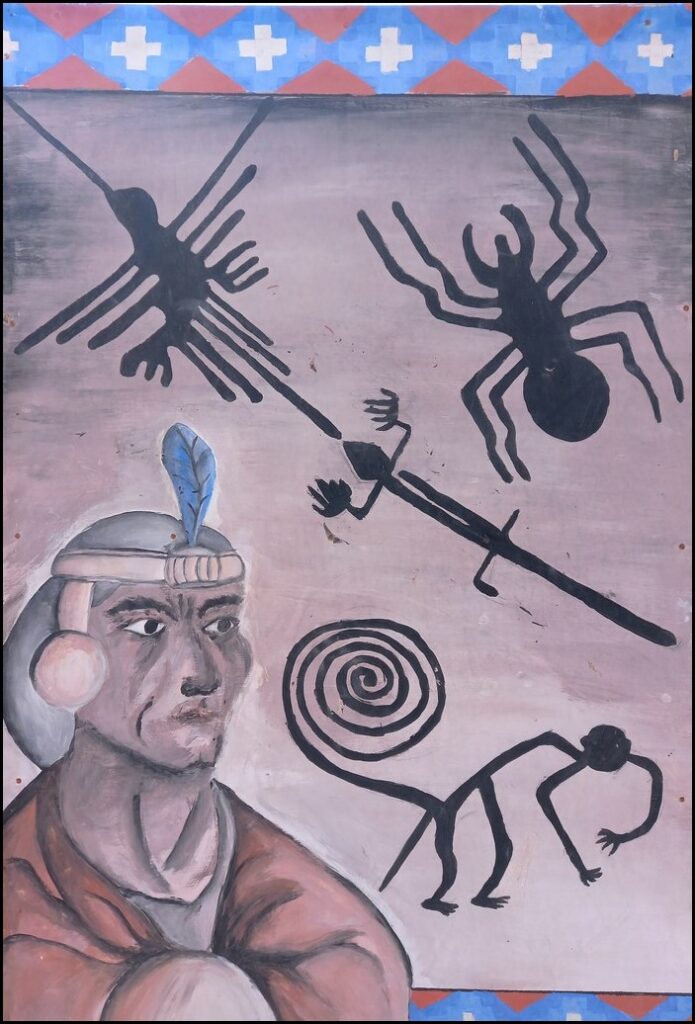
All about Nazca – Peru
Nazca is a small town in southwestern Peru most famous for the ancient Nazca Lines. You know, those huge figures and lines etched in the Earth by the pre-Inca tribes called Nazcas and Paracas. Those mysterious, inexplicable figures that lead some people to suspect alien involvement.
Because of Nazca Lines, Nazca is one of Peru’s most famous destinations, after the big-hitters of Machu Pichu, Cusco and Lake Titicaca.
While the Nazca Lines are certainly the main tourist draw to Nazca, there are several other equally significant and amazing historic & archeaological sites to visit in and around Nazca town as well.
I recently spent one week in Nazca exploring the most fascinating sites and I highly recommend anyone traveling through Peru to spend a few days – or a full week – in Nazca to learn all about the Nazca tribe, the Incas and both tribes’ very interesting customs, rituals, skills and the many wonderous things they left behind in the Nazca area.

Nazca Town
Nazca town itself is little more than a noisy, chaotic, crowded market town filled with hideously ugly buildings; shops galore spilling out onto the sidewalks; two dry & dusty, rocky riverbeds ‘flowing’ through town; roaring traffic and insessantly barking packs of street dogs. So don’t expect much of the town.
Unfortunately, Nazca is the lodging base for visiting all the amazing attractions just outside town. At least it’s easy to find meals, groceries and any other essentials you might need. And, in all fairness, Nazca does at least have a small pretty central park, for what it’s worth.
If at all possible, find lodging on the outskirts of town rather than right downtown in the midst of all the chaos and racket. And spend most of your time out exploring the sites.
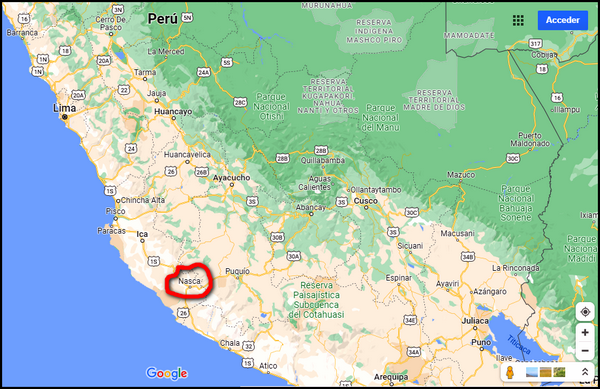
Location and geography of Nazca
Nazca is located 450 km / 277 miles south of Lima, a 7-8 hour drive or bus ride. Nazca is also situated right along the main tourist route through Peru, the so-called ‘Gringos Trail’, so it’s easy to reach by large, comfortable buses that run frequently.
The other closest Peruvian attraction, Huacachina Desert Oasis at Ica, is just 2.5-3 hours away from Nazca and located between Lima and Nazca.
The town is situated fairly close to the coast, in the middle of a vast dry desert region marked by stark dry mountains and dusty plains.
While Nazca town is quite ugly, it is set in a beautiful verdantly-green valley surrounded by gorgeous dry barren mountains. Once you get outside town you can enjoy the beautiful panoramic mountain and valley views.
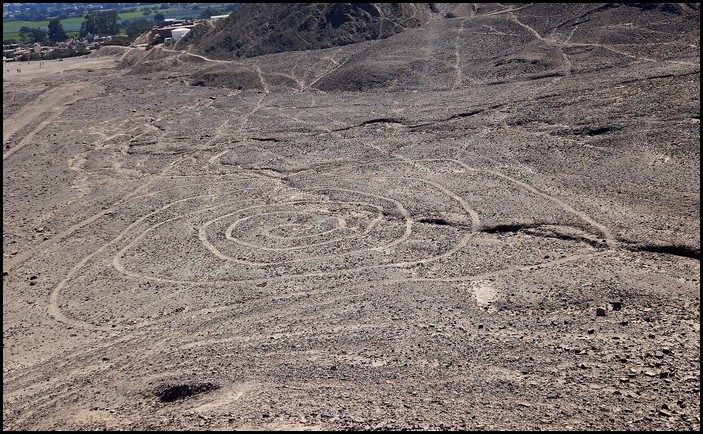
The Renowned Nazca Lines
The extensive Nazca Lines are scattered over a huge area in the wide valley between Nazca and Palpa town. They consist of hundreds of geometric designs and distinctive figures.
More specifically, the Lines include several hundred geometric shapes and designs, more than 70 animal figures and many plant figures. They are spread throughout an area of 450 sq. km / 170 sq. miles in the dry Nazca Desert.
Animal figures include hummingbirds, monkeys, whales, spiders, dog, condor, pelican, heron, parrot, lizard and more. Plants include trees and flowers.
These gigantic figures are called geoglyphs. The ancient Paracas and Nazca tribes created the figures by cutting deep incisions in the top reddish soil layer to expose the lower yellow-gray sub-soil. The artists used simple toils and surveying techniques to etch out straight and curved lines in the ground. which are generally 4-6 inches deep.
The amazing figures were created over nearly a millenium, between 400 BC and 500 AD. The figures have been preserved naturally in the dry Nazca Desert because of the super arid climate, lack of wind and remoteness of the region.
The lines were first noticed in the early 20th century by Peruvian military and civilian pilots, then by Peruvian archaeologists. In the 1940s Peruvian and international archaeaologists began studying the lines.
Dozens of theories have been proposed about the purpose of the lines and figures. Theories connecting the figures to aliens have largely been disregarded. The three most likely purposes were religious (to worship and/or communicate with Gods), astronomical (aligning figures with various planet, star and moon movements) and agricultural rituals.
To date, however, the true purpose of the Nazca Lines remains a mystery.
In 1994 UNESCO declared the Nazca Lines a World Heritage Site.
How to see the Nazca Lines
Depending on your budget, time, interest and preferences, you can choice among several ways to view the lines. If you’re really keen on these famous figures, you can do all of the following, or else just pick one.
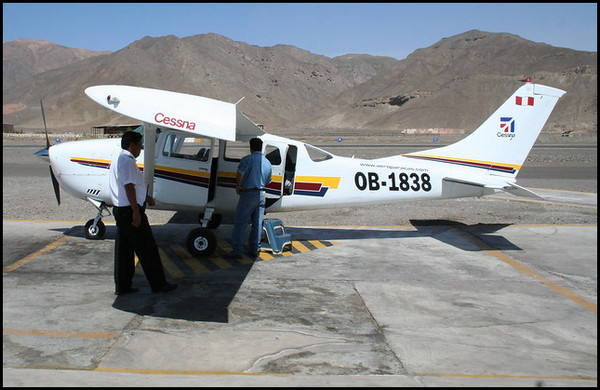
Flight
Undoubtedly, the very best way to see these massive figures is by local flight in a small plane. A flight is also the only way to see all the lines.
As a bonus, passengers get panoramic views of the beautiful valley, the dry desert mountains, Cerro Blanco sand dune (more below), Inca aquaducts and other archaeological sites in the area.
Basically, you get to see it all by flight.
The hitch, of course, is that the flights are relatively expensive. Rates I was quoted ranged from $70 – $150 US per person.
In addition, the local airport charges each passenger an ‘airport fee’ of 75 soles / $20 US. Now that’s a clear and expensive gouging of tourists, if you ask me.
For most American and European travelers in Peru, these rates are probably rather reasonable, especially considering it’s a once in a lifetime opportunity to get the best views of the famed Nazca Lines….and further considering that passengers get to ride an airplane and to see the entire valley from the air.
For anyone who can afford it, the Nazca flights are definitely worth it.
But flight prices might be too high for budget travelers. If that’s the case, don’t worry- you have other options to views at least some of the Nazca Lines…
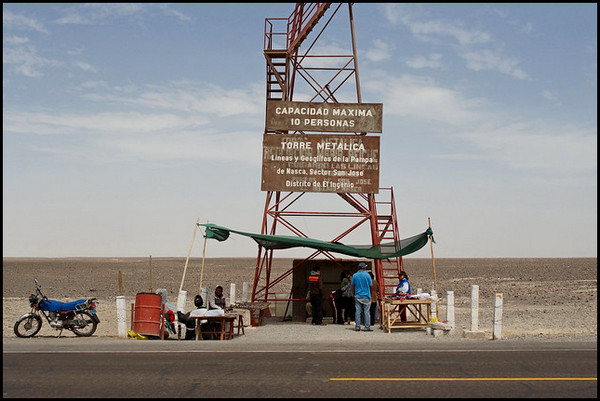
Viewing Towers
Two tall metal viewing towers are set beside the main highway about 25 km west of Nazca town. The original tower is 13 M tall while the newest tower, added in 2020, is 18 M tall.
Anyone arriving from places north of Nazca, such as Lima, Huacachina Oasis or Paracas National Park, will drive right past the towers on the way to Nazca. Travelers with their own vehicle can easily stop at the towers to check out three of the most famous Nazca Lines.
The huge Lizard, Hand and Tree figures can all be seen clearly from the towers. Admission to climb the new tower is just 4 soles / $1 US.
Of course bus passengers won’t have the option to stop and climb the towers on the way to town. But they can catch any bus heading north from Nazca and get dropped off at the towers then catch another bus back to town later. A taxi from Nazca will cost at least 30 soles OW / $8 US.
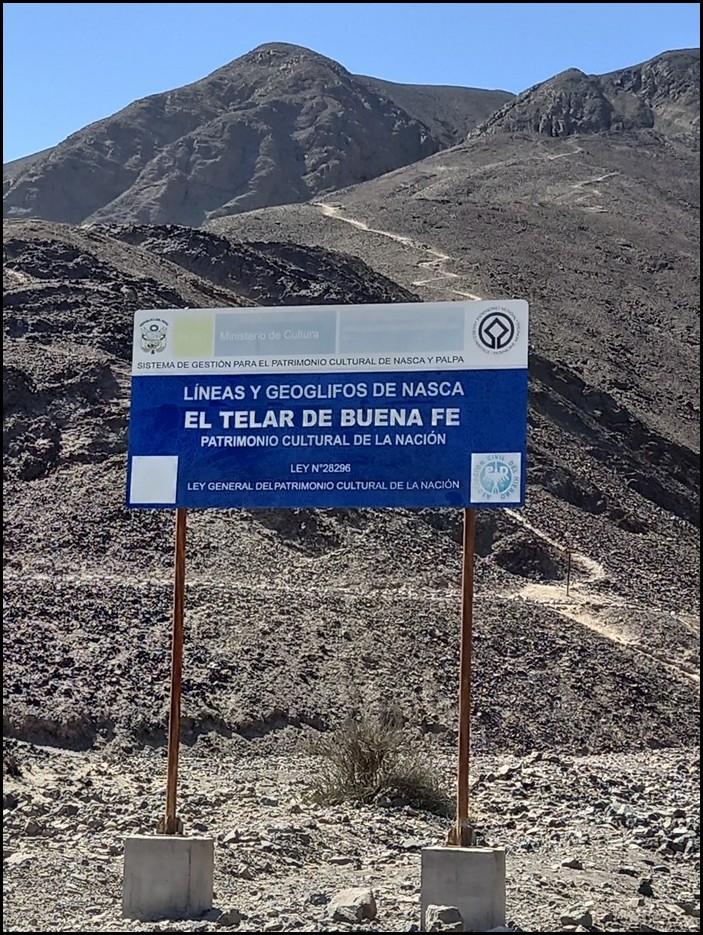
Hilltop vantage points
Another place to see a few famous Nazca Lines is at a location called Telar de Buena Fe. It’s situated about 4 km / 2.5 miles southeast of town. That’s a 40-minute walk or a quick taxi ride.
It’s also located just 20-minutes’ walk from Los Paredones Inca Ruins.
Once you get there, you simply follow the clearly-marked short trail up onto a couple hilltops where you can gaze down onto the lines.
According to the sign, four Nazca figurines are located there: a monkey with a spiral tail, a big spider, a hummingbird and a lizard.
Personally, I was only able to see part of the monkey and part of the spider. Either the other figures have faded away, I didn’t look in all the right places, or else my eyes weren’t working too well that day. Lol
In any event, visiting Telar de Buena Fe is one free and rather adventurous way to see at least a couple Nazca Lines.
There are several other hilltop viewing points nearby, each with an informative sign. These points include NazcaLines 3, NazcaLines 4, Mirador el Vigilante de Cantayoq and Las Agujas. You can walk from one to the other among the hills.
Other places to visit in Nazca
Besides the famous Nazca Lines, there’a great museum and about a dozen very interesting, worthwhile archeaological sites to visit in and around Nazca town. Each site is quite different, so it’s worth visiting as many as possible, especially if you’re interested in history, indigenous tribes and/or archaeology.
Several of these sites can easily be reached on foot from town. Others require a 30-minute to 1-hour drive to reach. That means you’ll need to have your own vehicle, take a taxi or join a tour.
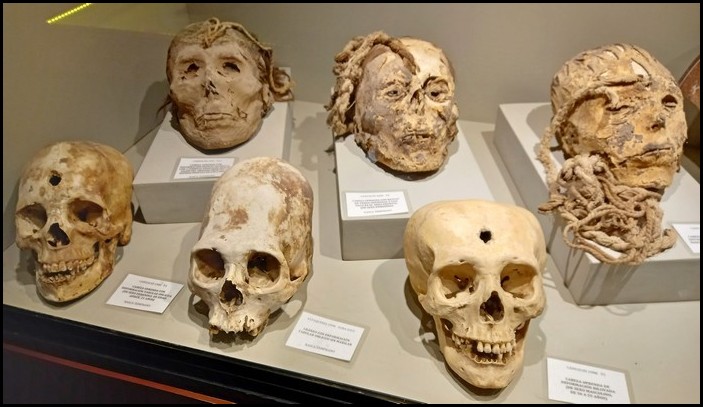
Nazca Archaeological Museum
This excellent museum is located right in town. It’s an easy 10-15 minute walk from Plaza de Armas. The museum features several rooms full of beautifully-displayed artifacts, handicrafts and cultural customs of both the Nazca and Inca peoples who lived in the region.
There are very detailed explanations of everything in Spanish. But the museum also provides thick booklets of equally-detailed explanations in English and a couple other languages.
On display are beautiful ceramics made by Nazca and Incas, mummified human sacrificial skulls, well-made jewelry and loads of information about the two tribes’ cultures and customs.
Out back there’s a small section of a real Incan aqueduct that visitors can walk around.
The museum makes an excellent introduction to the two main tribes and the important archeaological sites near Nazca.
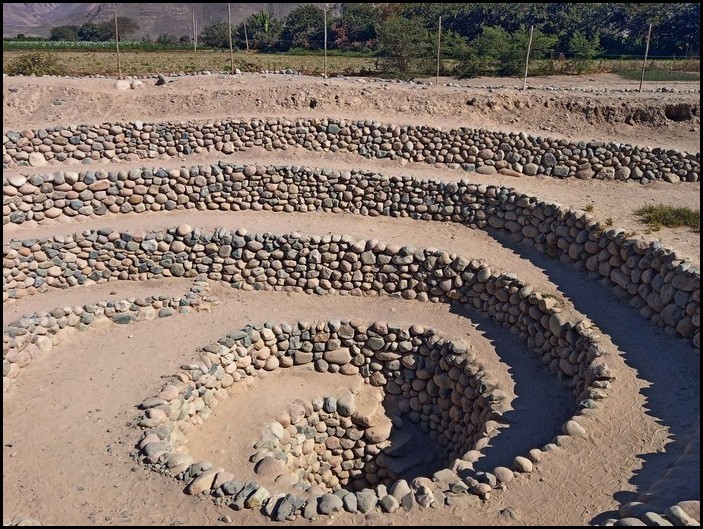
Inca Aqueducts
Situated around Nazca town there are several Inca aqueducts of various forms and sizes. The most spectacular are the Cantalloc Aqueducts.
They are located just 3.5 km / 2 miles east of town. That’s a 40-45 minute walk or a 10-minute taxi ride from Plaza de Armas.
Cantalloc Aqueducts consist of a series of 20 adjacent funnel-shaped holes cut in the ground by the Incas to reach the ground water. The huge holes are four to five levels deep and lined by stone walls.
Most of the aqueducts were cut in a spiral shape, with a sloped dirt walkway leading down to water. Interestingly, some of the aqueducts spiral in a clockwise direction while others spiral in a counter-clockwise direction. And other aqueducts were cut into separate levels, with steps leading between the levels.
According to the custodian I talked to, the difference in design was just up to the creators’ preferences. Hmm, I wonder about that. It’s also really interesting that the Incas made so many pits right next to each other, all in a long line.
During my visit, I estimated that the ground water was 20-35 ft down from the top of each pit.
But at places where the ground water is only about 5 ft below the surface, the Incas gave up the pits and built a long continuous canal lined by stones.
The aquaducts are a very pleasant place to visit, with shady trees and quiet fields all around…
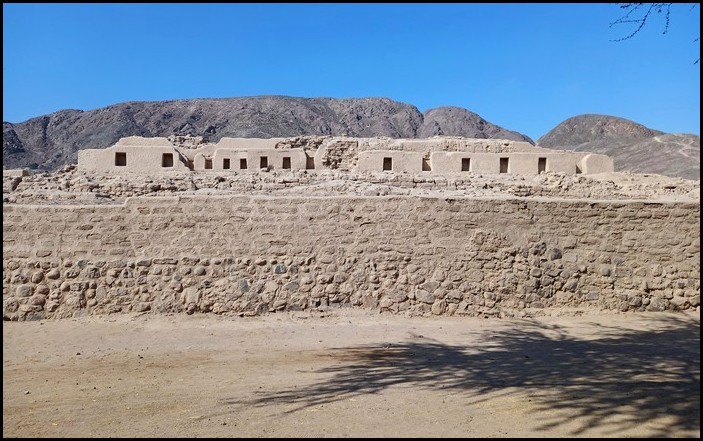
Los Paredones Inca Ruins
Los Paredones is an important Inca archeaological site that features the remains of a large Inca village. It’s set at the base of a mountain, right on the outskirts of Nazca town.
More specifically, Paredones is located just 1.5 km / 1 mile south of Plaza de Armas, an easy 20-minute walk or 5-minute taxi ride.
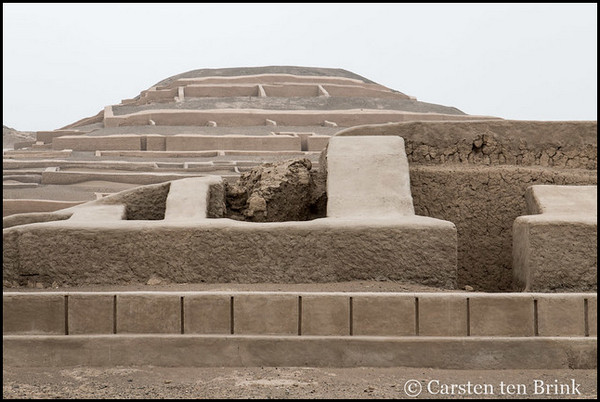
Cahuachi Pyramids and Burial Site
The spectacular Cahuachi Pyramids consists of several clay pyramids that stand 15-40 M / 50-130 ft tall. The complex of ceramic pyramids takes up an area of 24 sq km / 13 sq. miles in the desert west of Nazca.
Cahuachi complex was built by the Incas and is considered by archaeaologists to be one of the Inca’s most important ceremonical centers. At the complex were found various ceremics, textiles and burial sites with human remains, trophy skulls, mummies and other burial artifacts.
Cahuachi Pyramids are situated about 25 km / 15 miles west of Nazca town on rough unpaved roads.
There are no buses going to/from the site, so unless you have your own off-road vehicle, you’ll have to take a taxi or join a tour to visit.
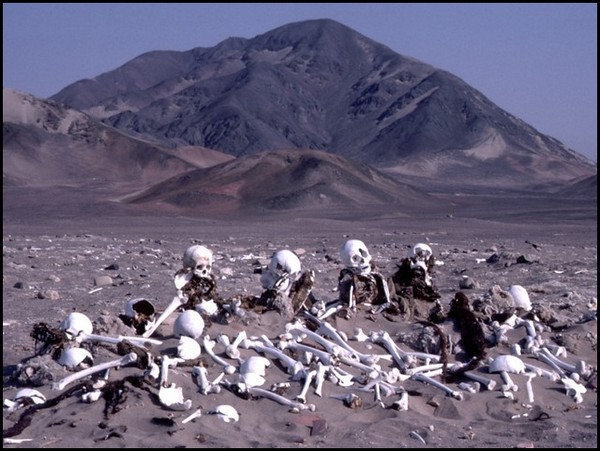
Chuachilla Inca Cemetery
Chuachilla is one of Nazca’s less famous but very impressive sites. It’s a modest Inca necropolis filled with mummified bodies, human skulls and various articles buried with the deceased.
Chuachilla is located 28 km / 18 miles south of Nazca town, out in the middle of the desert. That’s a 35-45 minute drive from Nazca.
Like Cahuachi Pyramids, there are no buses going to/from the site, so unless you have your own vehicle, you’ll have to take a taxi or join a tour to visit the burial grounds.

Cerro Blanco Sand Dune
Stark white Cerro Blanco (‘white hill’) is the world’s second highest sand dune! It rises a whopping 1176 M / 3850 ft in the Sechua Desert, just east of Nazca.
When visiting the Nazca Lines and other attractions just outside town, travelers can clearly see the massive white dune hovering high behind Nazca’s closer dark mountains.
Cerro Blanco looks like a mountain itself, it’s contrasting pale color really standing out among the otherwise dark gray, black and brown dusty mountains surrounding it. In fact, you’d only know Cerro Blanco was actually a sand dune by reading about it or visiting the massive dune in person.
==========================
You might also enjoy:
All about Paracas National Reserve
=========================







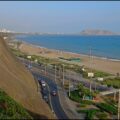
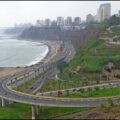
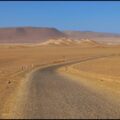


 Hi! I'm Lash, an American nomadic world traveler who's been traveling solo since 1998. I’m passionate about traveling the world nomadically and then sharing it all with you. I hope to inspire you to travel the world, to entertain you with tales from the road, and to help you reach your travel dreams. Welcome!
Hi! I'm Lash, an American nomadic world traveler who's been traveling solo since 1998. I’m passionate about traveling the world nomadically and then sharing it all with you. I hope to inspire you to travel the world, to entertain you with tales from the road, and to help you reach your travel dreams. Welcome! 



